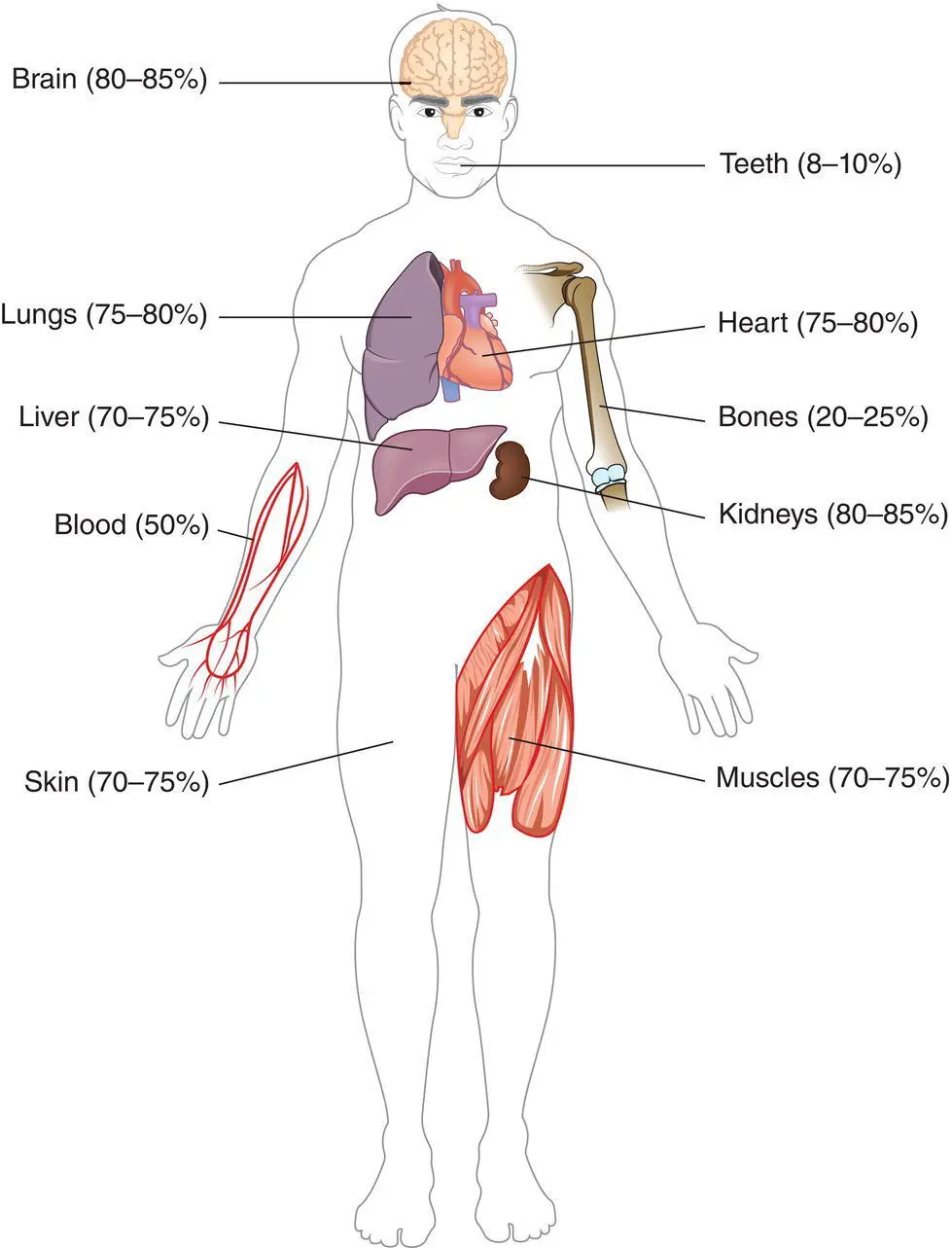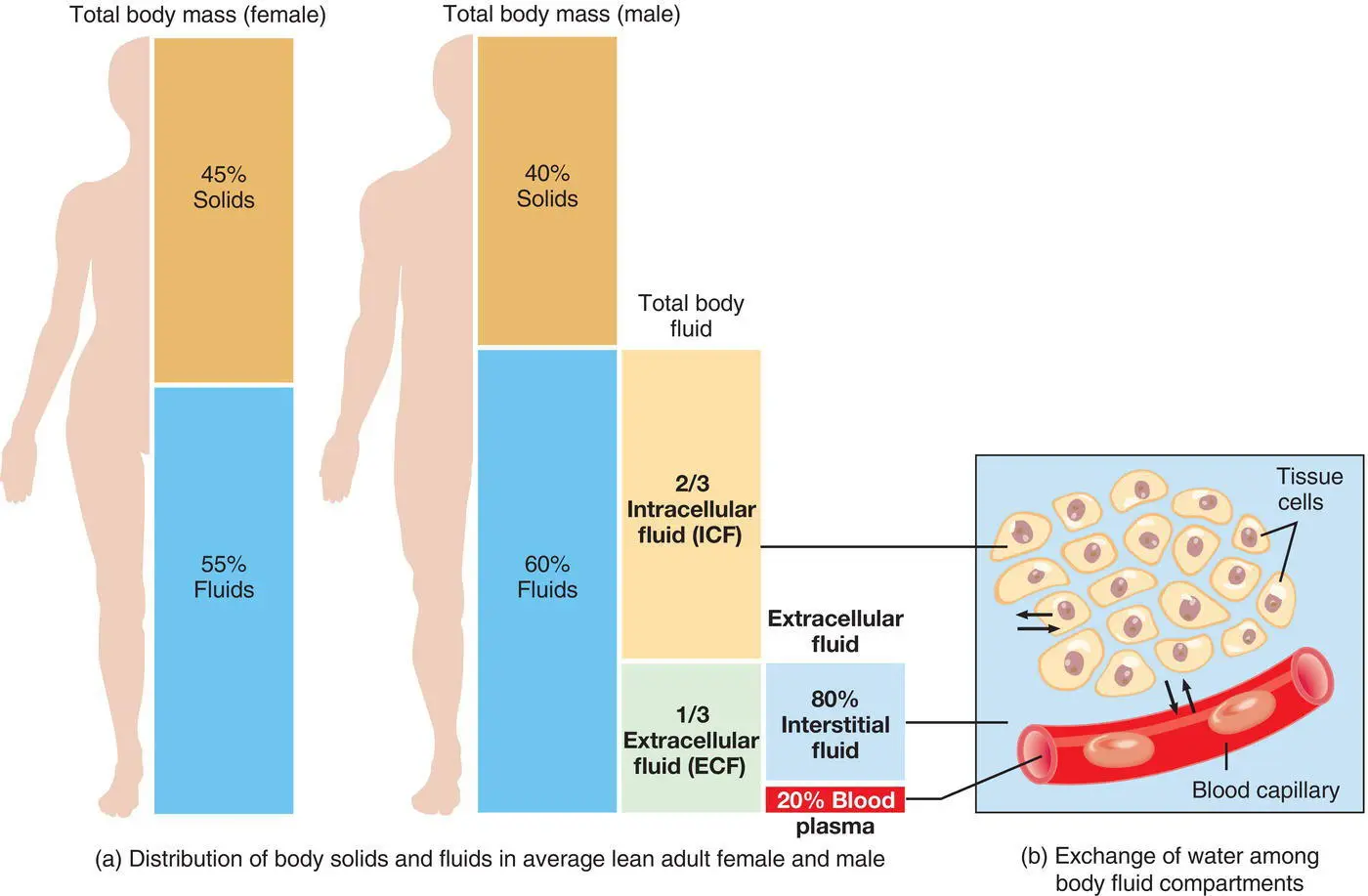An example of positive feedback is the release of oxytocin (a hormone) to increase and keep the contractions of childbirth happening as long as needed for the child’s birth. Contractions of the uterus are stimulated by oxytocin, produced in the pituitary gland in the brain, and the secretion of it is increased by positive feedback, increasing the strength of the contractions ( Figure 3.4).
Another example of positive feedback occurs in lactation, during which the mother produces milk for her child. During pregnancy, levels of prolactin (a hormone) increase. Prolactin normally stimulates milk production but during pregnancy, progesterone inhibits milk production. At birth, when the placenta is released from the uterus, levels of progesterone drop and as a result, milk production flows. As the infant feeds, its suckling stimulates the breast, promoting further release of prolactin, producing even more. This positive feedback ensures the infant has sufficient milk during feeding. When the baby is weaned and is no longer breast feeding, stimulation stops, with prolactin in the mother’s blood returning to pre‐breastfeeding levels.
Respiratory system: a high concentration of carbon dioxide in the blood triggers faster breathing. The lungs exhale more frequently, which removes carbon dioxide from the body faster.
Excretory system: a low level of water in the blood triggers retention of water by the kidneys. The kidneys produce more concentrated urine, therefore less water is lost from the body.
Endocrine system: a high concentration of glucose in the blood triggers secretion of insulin by the pancreas. Insulin, a hormone, helps cells absorb glucose from the blood.

Figure 4.1 Body water content.

Figure 4.2 Fluid compartments.
Source: Tortora GJ, Derrickson B. (2017) Tortora’s Principles of Anatomy and Physiology, 15th edn. Hoboken: Wiley, with permission from John Wiley & Sons.
The ability to maintain an adequate fluid balance is essential to health. Inadequate fluid intake or excessive fluid loss can lead to dehydration, which may impact negatively on renal and cardiac performance and electrolyte function. Regulating the volume and composition of body fluids, controlling how they are distributed throughout the body and balancing body fluid are critical when maintaining homeostasis and health.
A body fluid is a substance, usually a liquid, produced by the body that comprises water and dissolved solutes. Body fluids are dilute water solutions. Humans are predominantly made up of water, which ranges from around 75% of body mass in infants to approximately 50–60% in adult men and women and in old age as low as 45%. Body water varies with the amount of adipose tissue that the body stores. As the amount of adipose tissue increases, percentage of body water falls. Women tend to store more adipose tissue than men.
The brain and kidneys have the highest proportions of water, composed of 80–85% of their masses. The teeth, in contrast, have the lowest proportion of water at 8–10% ( Figure 4.1).
Body fluids are present in two main ‘compartments’: inside cells and outside cells ( Figure 4.2). Around two‐thirds of body fluid is intracellular fluid (ICF) or cytosol, the fluid which is located within cells. The other one‐third is extracellular fluid (ECF), outside cells, and includes all other body fluids. Approximately 80% of the ECF is interstitial fluid, which fills the microscopic spaces between tissue cells; 20% of the ECF is blood plasma (the liquid component of blood). Other extracellular fluids include interstitial fluid, which includes the lymph in lymphatic vessels; cerebrospinal fluid in the nervous system; synovial fluid in joints; aqueous humor and vitreous body in the eyes; endolymph and perilymph in the ears and pleural, pericardial and peritoneal fluids located between serous membranes.
Around two‐thirds of the body’s fluid is intracellular in the adult, contained within more than 100 trillion cells; this amounts to approximately 28 litres for an average 70 kg male. These vast numbers of cells are not physically united; the ICF compartment is a virtual compartment. These are small discontinuous collections of fluid but from a physiological perspective, intracellular fluid is considered as if it were one single compartment.
Extracellular fluid is located outside cells, surrounding them. Effective functioning of body cells depends on the precise regulation of the composition of their surrounding fluid. As the ECF surrounds the cells of the body, it serves as the body’s internal environment. The space that surrounds the entire body is the external environment.
Extracellular fluid declines as we age and is more readily lost from the body than the ICF. ECF is usually subdivided into a number of smaller compartments that are located in the intravascular and interstitial compartments or spaces. The intravascular compartment comprises the fluid within the blood vessels (the plasma volume). In an average adult blood volume amounts to 5–6 litres, approximately 3 litres of which is plasma. The interstitial fluid is the fluid in the ‘gaps’ between the cells and outside the blood vessels; this includes lymph fluid, sometimes called the ‘third space’. Transcellular fluid is fluid contained within particular cavities of the body and digestive secretions that are separated by a layer of epithelium from the interstitial compartment. Transcellular fluid is akin to interstitial fluid and often this is considered to be a part of interstitial volume. The transcellular fluid amounts to around 1 litre.
Maintaining fluid balance
Fluid balance is the balance between the volume of fluid taken in and the volume of fluid the body excretes. Optimal hydration is achieved when the volume of fluid taken in matches the volume of fluid excreted. Maintaining fluid balance is primarily accomplished through renal activity. Fluid intake and urine output are the key processes for maintaining fluid balance. A fall in circulating plasma volume, for example due to haemorrhage, can affect bodily functions such as oxygen delivery to the tissues and cells.
Fluid within the body can be thought of as separated into numerous functional compartments that are divided by semi‐permeable membranes permitting free movement of water but not of certain classes of solutes. In a healthy individual, fluid is divided between these functional compartments in specific ratios. The force that allows fluids to move between the body's fluid compartments is a difference between the compartments' relative osmolarity. Fluid moves between compartments until their relative osmolarity is balanced and a new steady state is achieved. Changes in osmolarity usually impact the ECF first as this is the compartment immediately in contact with the external environment. Once the ECF osmolarity changes, water moves into or out of the intracellular compartment within minutes, until a new osmolar equilibrium is established between the ECF and ICF.
Читать дальше














